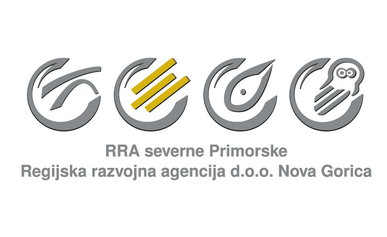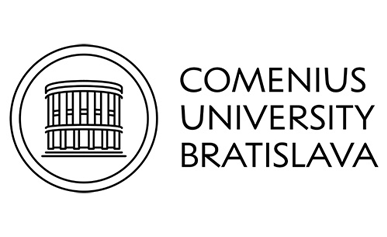|
Introduction to business etiquette
Learning outcomesClick to read 
|
At the end of this module you will:
|
|
 |
Understanding the role of business etiquette in a business environment
|
 |
 |
Learn about behaviours and attitudes to be adopted in an international business relationship
|
 |
Understand how to represent the company and its values
|
| |
| |
IntroductionClick to read 
Business etiquette in an international environment is about building relationships with other people. Etiquette is not about rules & regulations but about providing basic social comfort and creating an environment where others feel comfortable and secure. This is possible through better communication.
Objectives
Business etiquette aims at facilitating between the representatives of a company and the international actors:
- Establishing a basic social comfort
- Mastering cultural codes
- Creating long-lasting and fruitful business relationships for all parties
Goal
Create a relationship of trust, convey a positive image of the company and make people want to be partners and contribute to success.
Learn & DiscoverClick to read 
1. Country watch
- Take the time to collect information about the target country or countries and their uses.
- Be informed about the historical, geopolitical and economic context of the countries concerned
- It is important to do some research on customs and business conduct. Know whom to contact and how to contact them so as not to offend anyone.
2. Meet with representatives
- Find out whom you are talking to and what their real function or role is.
- Know her/his power and her/his ability to decide beyond your title. Conversely, discreet interlocutors can be essential decision-makers.
- An error of judgment can be fatal for the development of the company, hence the interest in being well-advised and having reliable references.
3. Considering the uses
- To understand a country, its functioning, to go on reconnaissance on the spot.
- This first observation allows us to better understand how people communicate. How to address people, according to their rank or caste, to enter their sphere of interest and inspire respect.
- It is about discovering the business world and how it works. Is the market open to foreign companies? Is it necessary to consider a local partner? What are the regulations to respect?
Attitude & VisibilityClick to read 
1. Dress Code - Behaviour
- The keys to making a good impression are dressing appropriately and your body language
- Between comfort, professionalism and courtesy, there is a delicate balance that differs from country to country,
- It is important to find out the dress code of the country, the company and the type of event, which is a sign of respect to your interlocutors.
2. Represent the company and its values
- The company representative plays an important role in the image of the company and its employees. You must remain polite and measured in your exchanges. Using a few words in the local language is always well received. Avoid value judgments and be discreet about the information exchanged.
- You should take the time to explain what makes the company strong and announce its values: honesty, curiosity, capacity to commit, trust and transparency.
- You are the ambassador of your company, and your behaviour is scrutinised: your punctuality, your appearance, and your attitude are all reassuring signs for your interlocutors.
3. Considering the customs
- After discovering the country and its customs, it is essential to prepare your business meetings. You must write memo cards with the most important elements.
- As a woman entrepreneur, you must be even more vigilant. It is advisable to adopt a dress code and an attitude as neutral as possible. In some countries, think about covering your hair, wearing pants and long-sleeved clothes.
- It’s better to know the name, to focus on the face, switch off your smartphone
Business etiquette in practice
Some tipsClick to read 
1. As big as the world
- Business etiquette differs from region to region and from country to country.
- This creates a complex situation for people as it is hard to balance the focus on both international business etiquette and other business activities at the same time.
- Therefore, a wise step is to focus on some key pillars of business etiquette.
2. A subtle alchemy
- First and foremost, you have to maintain an impeccable standard image for your company.
- To be authentic is a value that reassures her/his interlocutor.
- Being able to integrate allows you to adopt the codes of the foreign country without giving up your own culture.
- It is about establishing a mutual understanding and a relationship of trust.
3. Perception
- It is important to adapt to each case. There is no single recipe, the ingredients must be adjusted for a winning situation.
- The behavior of representatives of other foreign companies already established can be a model.
- Knowing how to perceive and feel the ambient atmosphere and vibrations are factors that should not be neglected.
NetiquetteClick to read 
Definition
- Take the time to collect information about the target country or countries and their uses.
- Be informed about the historical, geopolitical and economic context of the countries concerned
- It is important to do some research on customs and business conduct. Know who to contact and how to contact them so as not to offend anyone.
Controlling and managing your Internet presence
- Find out whom you are talking to, what their real function or role is.
- Know her/his power and her/his ability to decide beyond your title. Conversely, discreet interlocutors can be essential decision-makers.
- An error of judgment can be fatal for the development of the company, hence the interest of being well advised and having reliable references.
How to manage your image
- To understand a country, its functioning, to go on reconnaissance on the spot.
- This first observation allows to better understand how people communicate. How to address people, according to their rank or caste, to enter their sphere of interest and inspire respect.
- It is about discovering the business world and how it works. Is the market open to foreign companies? Is it necessary to consider a local partner? What are the regulations to respect?
Good PracticesClick to read 
|
The Business Etiquette challenge
- The main objective is to be understood, appreciated by all and to be able to do business in all circumstances.
- You have to look at successful companies and challenge yourself.
- The goal is reached when the interlocutor rephrases the proposed concepts and agrees to engage.
|
 |
Means and methods
- The means and methods to be put in place are decisive in order to manage communication and successfully promote the company abroad.
- The first step is to work remotely with Internet tools, such as LinkedIn, emails, Eventbrite for online events, and online ads. Communication is different for each of these media.
- The second step is to establish a phone contact or video conference to better understand the needs and establish a relationship.
- It is important to be able to measure the performance of your presentation and arguments. Online surveys and polls can be used. The feedback can be used to adjust or improve the presentation and the way of communicating.
|
The Attitude
- Globalization allows most countries to accept the role of gender diversity in business.
- Digitalization facilitates working at a distance and the approach of international clients.
- With intuition and the new way of working new productive rules are introduced to the business world. With that, a wind of modernity and innovation blows on a world traditionally reserved to a more reserved work environment.
|
 |
Summing upClick to read 
 |
Business Etiquette in an international environment
|
 |
 |
Goal |
| |
Have an appropriate behavior to develop the company's business internationally
|
|
Optimising financial and human results, transmitting the company's values abroad
|
|









 Play Audio
Play Audio 












